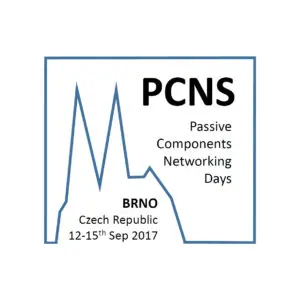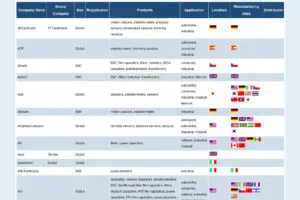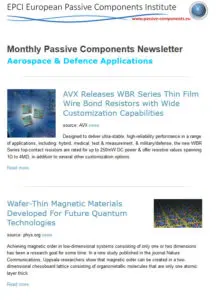source: EPCI, Lanskroun, Czech Republic, 27th July 2017
European Passive Components Institute EPCI signed contract with European Space Agency ESA on passive components support.
“It is our great honour to strengthen our relationship with ESA on further activities supporting passive components and its applications in space environment” said T.Zednicek, EPCI president
The contract is including further expansion of the EPCI European passive components manufacturer database that already includes more than 130 European passive industry companies – see here, that will provide ESA with a better overview of European capabilities in non-space commercial passive components. Evaluation, qualification and faster adoption of commercial components in space is one of the critical items for the future space systems and missions.
Motivation for close commercial components trends watching is however not just simple cost reduction, as it can be thought on a first moment. Qualification of commercial components to space level takes currently about five to eight years, that may be way too long considering the fast continuous development in the commercial electronics. Modern component technology can bring a significant size and payload reduction, enhanced features and even better reliability, thus it enables new hardware designs and missions.
It is of key importance for space industry to closely monitor the commercial sector development and identify the new component technologies benefitial for space use. Those components have to be then subjected to a knowledge based evaluation procedures to be ready for the next generation of space electronic hardware. ESA is supporting, as part of the EPCI contract, monthly based space passive components newsletter that is collecting worldwide passive component news . The space passive newsletter together with other EPCI weekly and monthly newsletters can be subscribed free of charge at the EPCI web pages here.
 EPCI has been working closely with ESA on organisation of passive seminars and conferences such as ESA SPCD 2016. The next solely passive components symposium PCNS organised by EPCI will be held 12-15th September in Brno, Czech Republic, jointly organised together with Brno University of Technology. The attractive programme is offering interesting papers from all industries and universities, the concept aim to be a platform for networking between the users, industry and academia on passive components. Capacitor, Resistors and Inductor seminars dedicated to HW engineers, component engineers, FAEs and everyone interested in CLR components is organised as a pre-event on 12th September presented by experienced lecturers. Commercial for space components will be discussed at a hot topic panel discussion between the attendees and tutorials by ESA, ASRC (NASA) and Kemet Corporation. More details about the PCNS are available at the symposium website here and the preliminary programme can be viewed here.
EPCI has been working closely with ESA on organisation of passive seminars and conferences such as ESA SPCD 2016. The next solely passive components symposium PCNS organised by EPCI will be held 12-15th September in Brno, Czech Republic, jointly organised together with Brno University of Technology. The attractive programme is offering interesting papers from all industries and universities, the concept aim to be a platform for networking between the users, industry and academia on passive components. Capacitor, Resistors and Inductor seminars dedicated to HW engineers, component engineers, FAEs and everyone interested in CLR components is organised as a pre-event on 12th September presented by experienced lecturers. Commercial for space components will be discussed at a hot topic panel discussion between the attendees and tutorials by ESA, ASRC (NASA) and Kemet Corporation. More details about the PCNS are available at the symposium website here and the preliminary programme can be viewed here.































